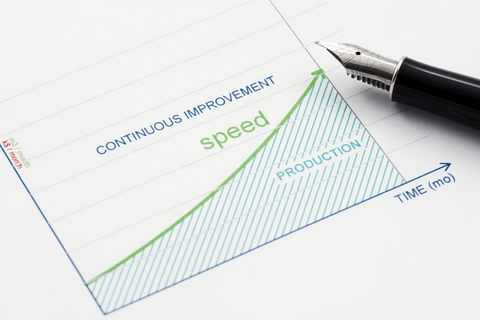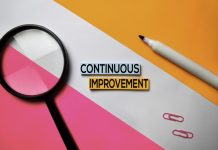Continuous improvement is an ambitious yet highly attainable goal for any organization. However, to make sure that the results of process improvement are sustained over a period of time, the steps used to achieve them need to be revisited over and over again. In other words, continuous improvement needs to be embedded in the DNA of the organization.
No two organizations are the same, but when it comes to building a culture of continuous improvement, the following eight steps can work for virtually any organization.
1. Get Leadership Involved
The first step in imbuing the organizational culture with continuous improvement is to get leadership involved as well. When leadership openly shows commitment, it will motivate everyone else to do the same. It is leadership’s job to come up with attainable continuous improvement goals that are in line with the existing business models and organizational culture.
Goals provide a yardstick for measuring the success of the continuous improvement efforts. So it is vital for leadership to have the end goal in mind from the beginning. That way, they can know when their goals have been achieved or how far they have progressed.
2. Communicate Continuous Improvement to Everyone
With the first step out of the way, leadership must then communicate continuous improvement to the rest of the organization. This starts by talking to the key stakeholders about it and getting them on board. These are the people that can then influence others to buy into the idea once the message reaches the whole organization.
It’s important to make sure that everyone in the organization, from top to bottom, shares the same vision. This allows everyone to work toward the same goals. Once this happens, only then will continuous improvements be effective.
3. Develop a Framework
A framework is key to sustaining continuous improvement within the organization. Basically, this is a routine that will be adopted by the organization to spearhead improvement ideas. One framework that has consistently been used is Kaizen. This is where small teams hold a meeting each week to discuss one thing they can improve before beginning any of the work.
4. Make Sure Everyone Understands What Role They Have to Play
Once the improvement efforts have been defined and communicated, some people will still feel like this is a problem for management, not them. Make sure you also clearly define each role every member of the organization has to play. On top of that, make sure to add incentives for a job well done.
5. Practice Caution and Patience
Instilling a culture of continuous improvement is not something will happen immediately. Many organizations want results quickly and they want them to be big, which is a mentality not inline with continuous improvement. In the end, they end up saddling their teams with work that is too much to handle, leading to sloppiness, project delays and even resistance.
Caution and patience need to be practice to see how much work the teams can reasonably handle. This can take anywhere from six months to a year.
6. Measure Results
The outcomes of continuous improvement need to be quantified to see if the results are being achieved. If your improvement efforts are being carried out effectively, you will most likely see positive results.
This means that upper management will see the value and invest more in these efforts. Not only that, employees will see that they are making a positive change, making them feel more valuable to the organization. In the end, this will fuel their motivation and determination,
7. Communicate Progress
Once the results have been measured, all stakeholders need to be informed of the progress. Results will not be immediate and it is vital that everyone understands this and is not demotivated. Eventually, all their efforts will start to show.
8. Repeat
The point of continuous improvement is that it is continuous – never-ending. Be sure to go through these steps again and again to not only establish but to keep the culture of continuous improvement going.














